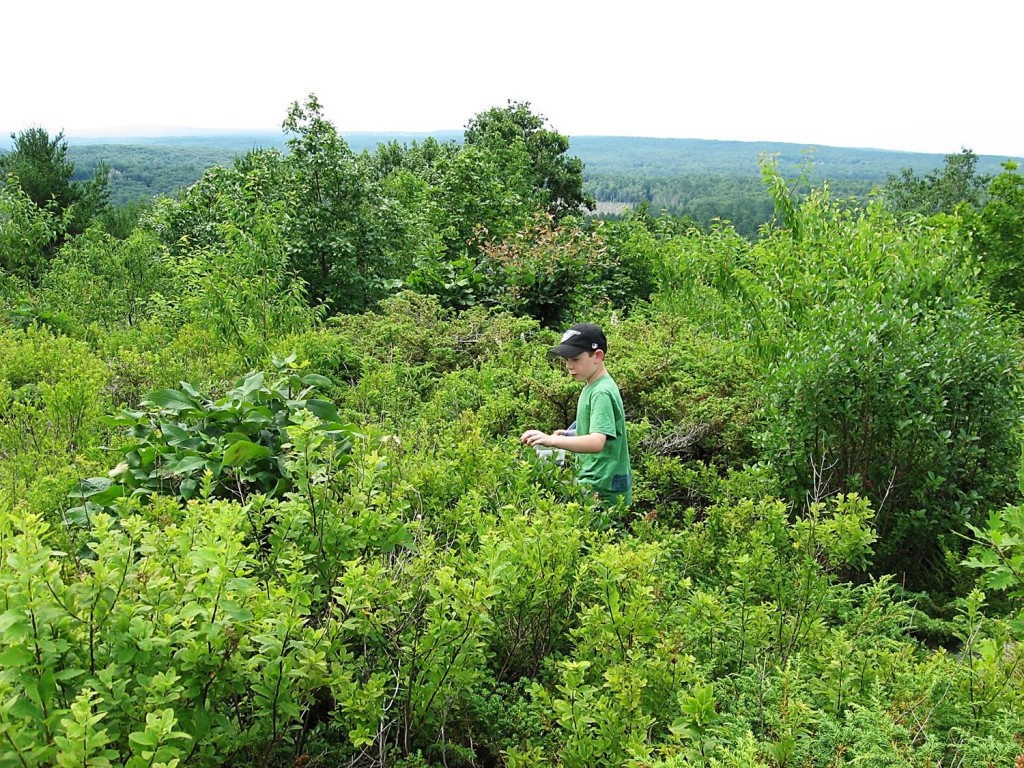
Steven gathering blueberries on a beautiful hill top. Teaching kids to forage helps them understand their dependence on nature.
Foraging for wild edibles is a rapidly growing hobby, popular among naturalists, preppers, anarcho-primitivists, foodies, and so on. And it’s no wonder: wild edibles grow organically and cost no money. But I often wonder about the environmental costs, which could be substantial if popularity continues to rise. That’s why I think it’s important to have a foraging ethic, a code of behavior to guide one’s foraging activities. So I thought I’d share mine here, for whatever it’s worth. Think of this as a special case of Aldo Leopold’s concept of a “land ethic”, as he describes in his seminal book, A Sand County Almanac, whereby consideration for the entire biotic community – soils, waters, plants, and animals – guides all of one’s interactions with nature.
Here are 4 important tips for a good foraging ethic
1. Forage for plants that are common in your area
This ensures that you will not be a threat to rare plants. However, it does require an ability to identify common and uncommon species in your area. This is a daunting concept if you’re a beginner, because it’s easier to learn one or two plants at a time, and more appealing to forage for plants you have heard about and expect to like. It’s fine to start that way, but you’ll find you have many more foraging options, and you’ll be better equipped to make responsible decisions, if you learn plant identification in general.
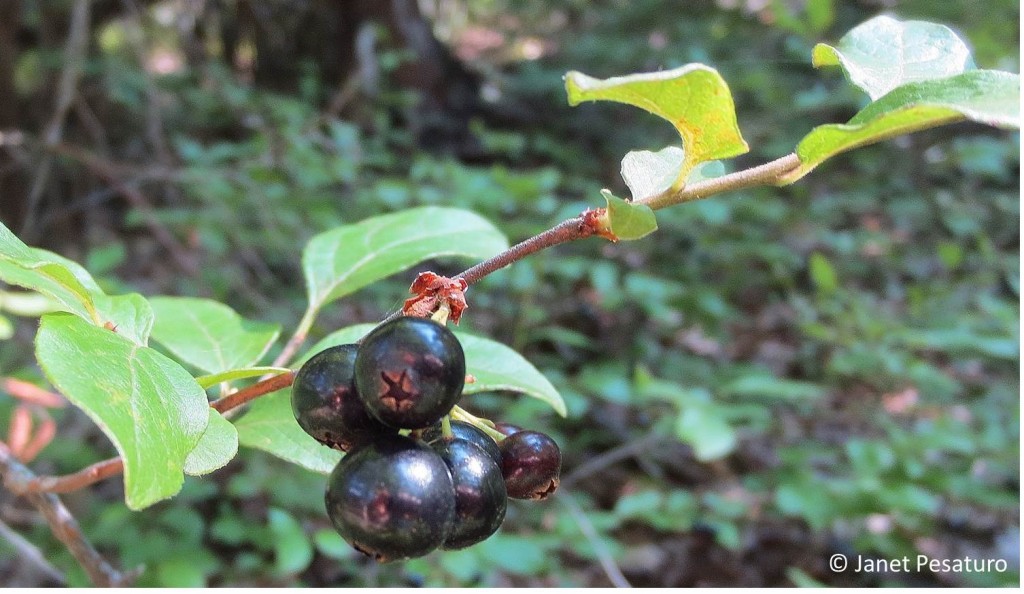
Wild huckleberries and blueberries of all kinds are common in my area, so I gather a lot of them every summer. This is black huckleberry, Gaylussacia baccata.
Get a few field guides or keys, and start learning the plants that grow with wild abandon around your yard, along the roadsides, and wherever you hike. You will soon discover that many of them have edible parts. You’ll probably find it easier to start with a certain class of plants, such as trees, shrubs, or herbaceous plants. Trees are a good place to start, because there are fewer species and because you can identify most of them in any season.
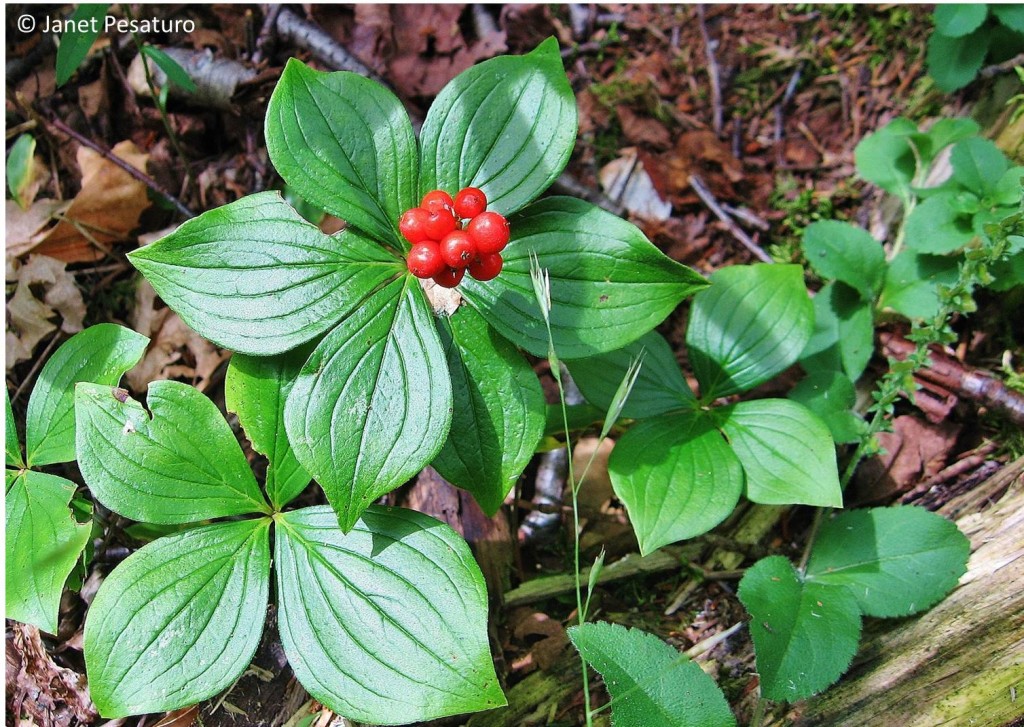
Bunchberry is uncommon where I forage, so I let it be. Harvesting only common species is part of a good foraging ethic.
2. Do not spread invasive species
When you eat an invasive plant, it becomes a resource rather than a pest. This is an example of adapting to environmental change, far better than reacting to it (with herbicides, for example). It’s even better if your method of preparation reduces its spread, as when autumnberries or barberries are boiled to make juice, thus killing the seeds.
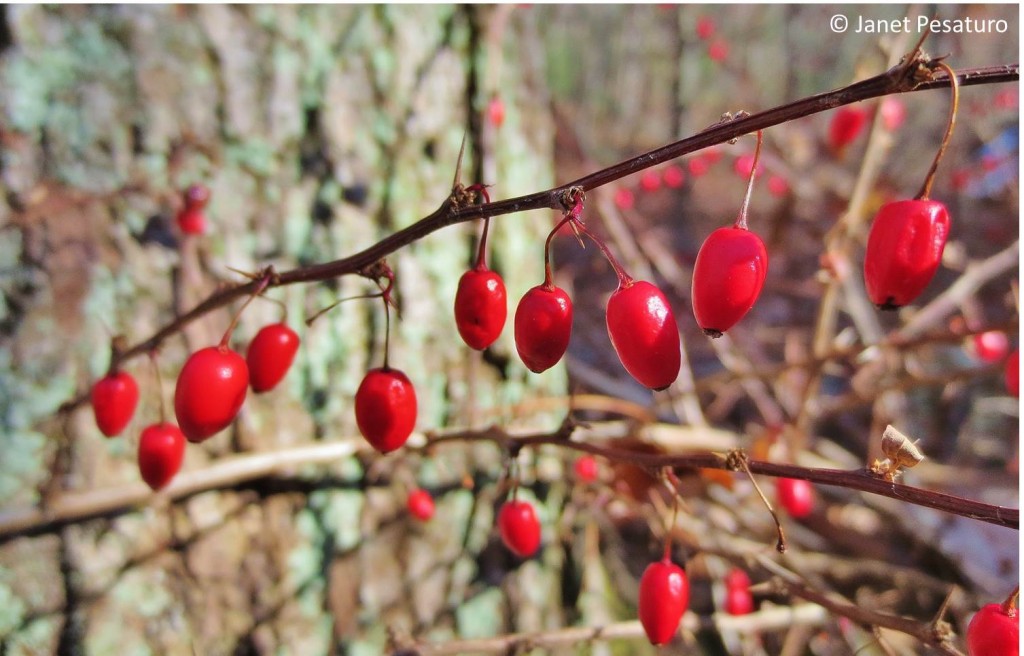
Japanese barberry, Berberis Thunbergii, is invasive in parts of the US, but the berries make an excellent jelly, and the boiling process kills the seeds, reducing spread.
However, some people worry that foraging for invasive plants will increase demand for them, tempting foragers to plant them in their yards for easy harvesting. In that case, foraging could be harmful to ecosystems. This is a real concern, and, unfortunately, I have come across wild edibles enthusiasts who encouraged the propagation of invasive species, whether due to lack of information or lack of concern.
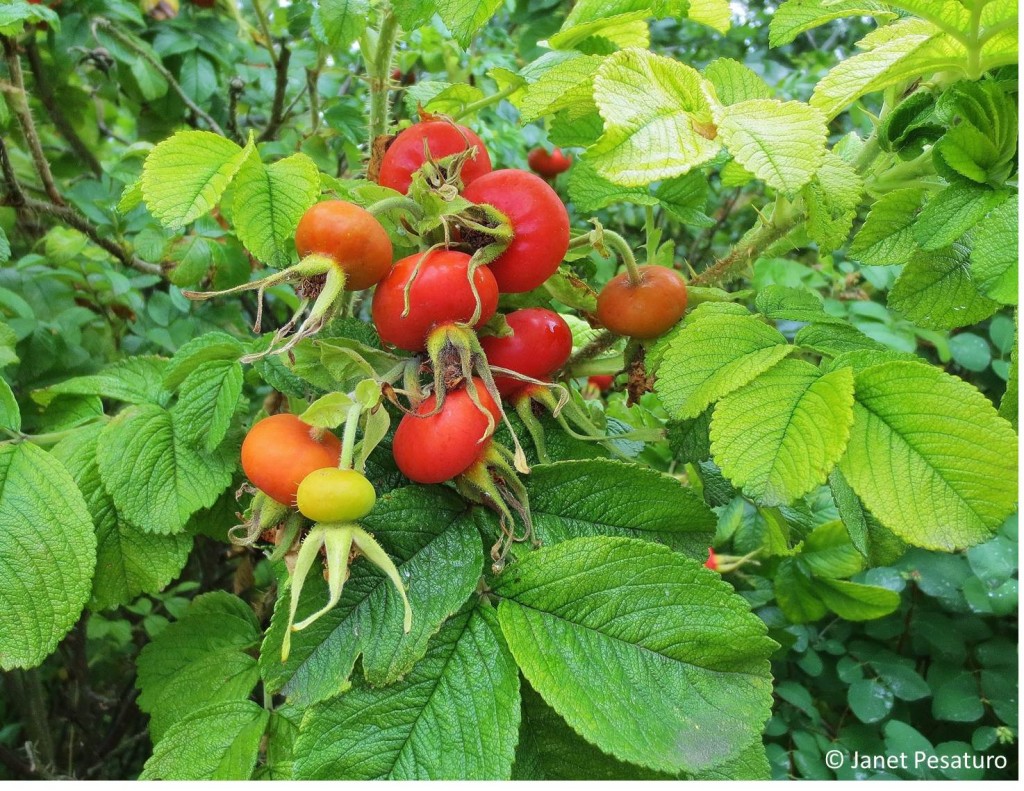
Native to Asia, the rugosa rose is invasive in some areas, especially the seashores of Northern Europe, but also in parts of the US. It’s best to forage for the hips where it already grows, and resist the temptation to plant more of it.
Educate yourself about plants in your area. If you live in the US, take advantage of the informative and easy to use Invasive Plant Atlas of the United States. If you learn that a plant is considered invasive or potentially invasive, please do not plant it. As a member of my local conservation commission, I am, like many other conservationists, in the throes of the debate over which does more damage, invasive species or herbicides. Nobody thinks herbicide use is a good thing, if it can be avoided, so please do not give us additional cause to consider it.
3. Tread lightly
Be mindful of what you are trampling as you harvest. It is often easy to gather a lot of food directly from the roadside or trail side, and doing so will reduce your impact. Avoid causing unnecessary damage even to common plants. It might be hard to imagine that we could ever threaten an abundant and widespread species, but humans have done it before (remember the passenger pigeon). And, with our ever growing population, we could easily do it again. Arm yourself with knowledge. Understanding biologic systems will help you make more responsible decisions.
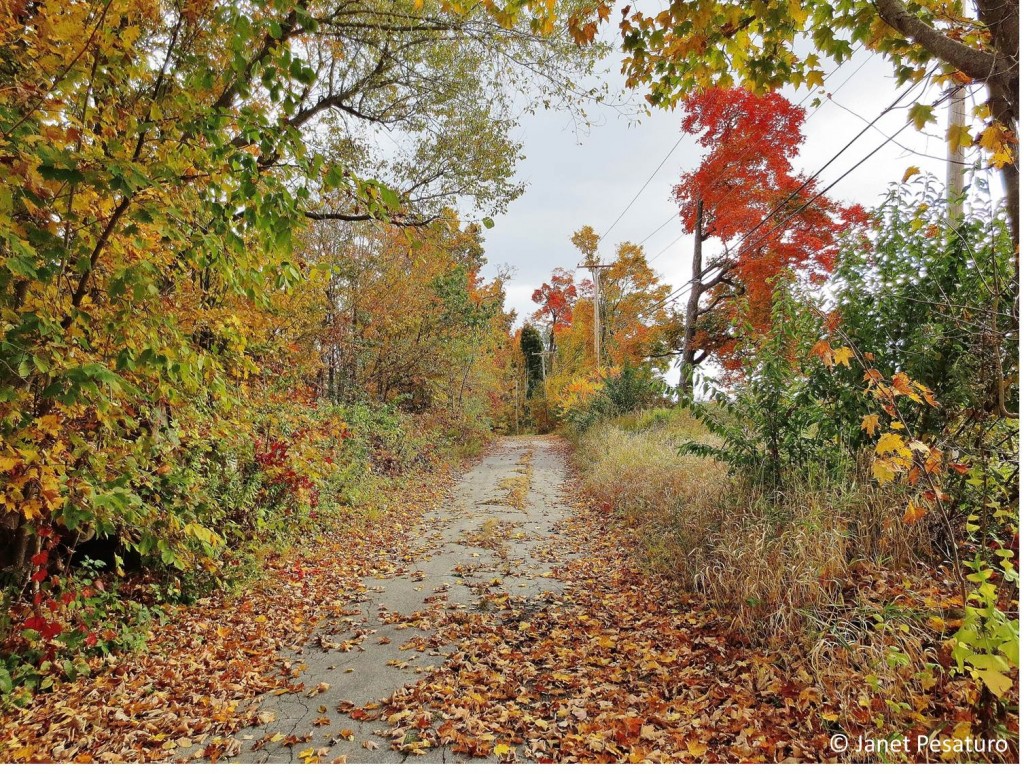
Foraging need not be a backwoods experience. There are many wild edibles within easy reach along this country road.
4. Develop awareness of other animals, and let it inform your own foraging ethic.
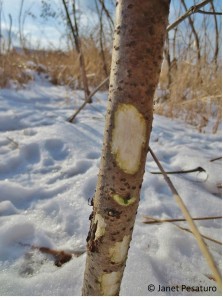
Rabbit feeding sign on sumac. Cottontails feed on the cambium layer of the bark, and seek cover in sumac thickets.
This is what I enjoy most about foraging. You become aware of other species that depend on the plants you harvest. You begin to see yourself as just one part of an intricate system. You recognize that your own actions impact others within that system. You learn that you can choose to steward the land, rather than exploit it.
Occasionally people tell me that foraging is bad because it robs food from wildlife. While their concern for the welfare of wild creatures warms my heart, I don’t think they have given much thought to our current food system. My response to them: Where do you think your store bought food comes from? Most likely, it comes from a virtual monoculture: formerly diverse habitat that was converted by the plow, pesticides, and GMO’s, to a single species plantation, now hostile to most of the wildlife it once supported. That is much worse for wildlife than foraging from a relatively wild patch of land.
In fact, foraging could ultimately benefit wildlife conservation, in the same way hunting has. Revenue from hunting licenses has protected a lot of wildlife habitat. Imagine a system where one could purchase a license to forage on wildlife sanctuaries. This may not appeal to those of us who forage to save money, but it may be more sustainable than a free for all.
So keep an eye out for cedar waxwings enjoying the fruit you want for jam. Observe pollinating insects visiting the flowers you seek for fritters. Look for rodent teeth marks on the shells of hickory nuts you prize for pies. Notice the rabbit’s feeding sign on the sumac stems as you harvest the berries for juice. We are linked to all of them in mutual need for the same soil, water, flora and fauna. If we take them down, we go down with them. But if we help them thrive, we thrive, as well. Let this awareness guide your actions, and shape your foraging ethic.
Shared on: Thank Goodness it’s Monday, HomeAcre Hop, Time Travel Thursday, Wicked Awesome Wednesday, Green Thumb Thursday, From the Farm Blog Hop, Freedom Fridays, Simply Natural Saturdays, Simple Saturdays blog hop #4, Homestead Barn Hop #141, Wildcrafting Wednesday #119, Natural Living Mondays, Mostly Homemade Mondays, Backyard Farming Connection #63, Teach Me Tuesday, Tuesdays with a Twist #41, Fresh Foods Wednesday #65, Waste Not, Want Not Wednesday #59, Tuesday Greens #59











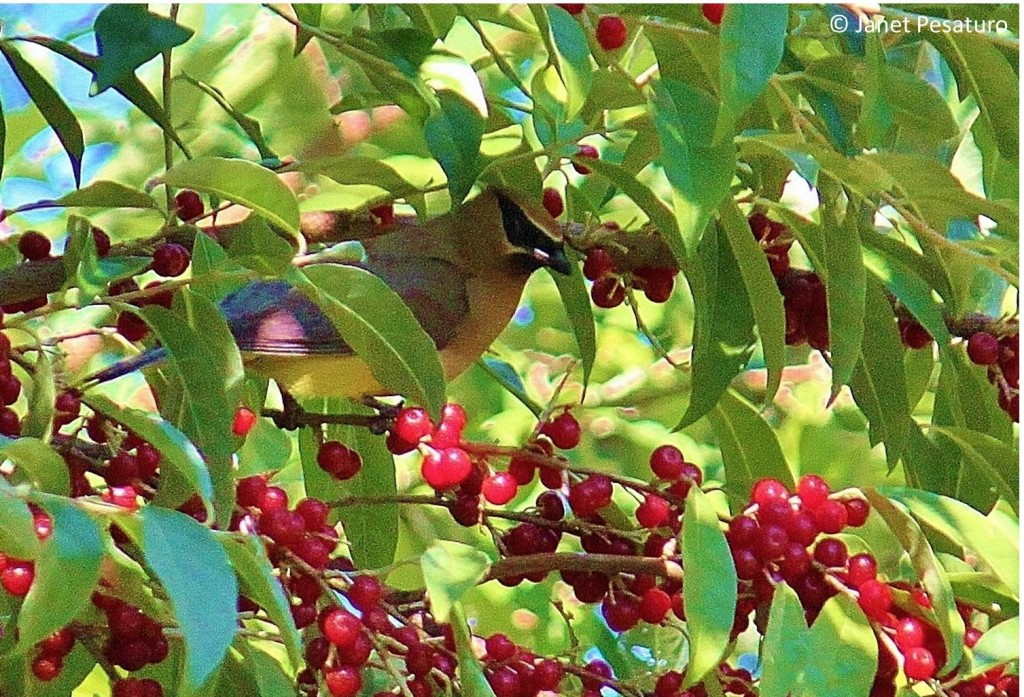
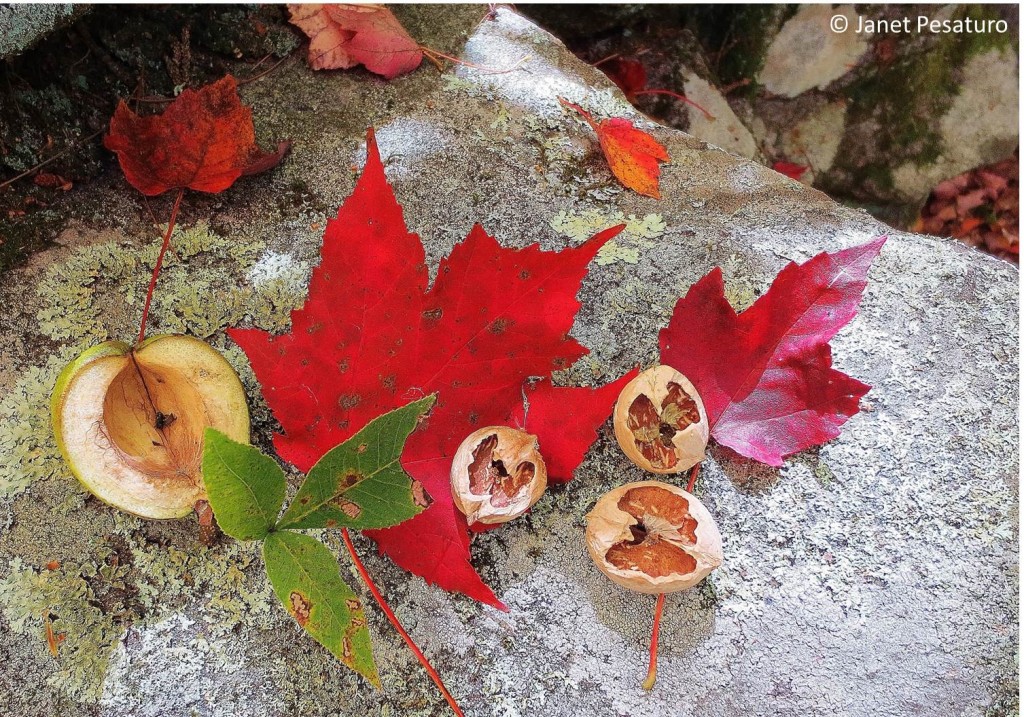
Beautifully written, beautiful pics! Great ‘food for thought’, as always.
Thanks – I’m glad you enjoyed it!
Well said Janet. I particularly appreciate your words about the realities of the modern food system and industrial agriculture.
Thanks Josh. By the way, I recently checked out your blog and really like the new look.
Pingback: Friday Favorites :: 1/3/14 Edition | Homespun Seasonal Living
We were blessed at one house we lived in to have wild strawberries. That is my only experience with foraging. Most of the land around us is privately owned, so we can’t exactly go looking. Lately, I forage online and have it sent to me. Does that count? 🙂
LOL! Unless you live in a neatly clipped suburb, there are probably many more wild edibles at your fingertips than you’d ever suspect. Honestly, I do quite a bit of foraging along roadsides, in small weedy patches, and from hiking trails.
Wild strawberries are wonderful. I haven’t partaken of those very often, because I don’t know of a place around here where they grow in abundance.
What if I do live in a neatly-clipped suburb? Or on a college campus? Where are the best public places to forage?
Lauren, try foraging on protected lands open to the public for hiking. This could be conservation land owned by your town, land protected by your state’s division of fisheries and wildlife, National Wildlife Refuges, land owned by local or regional land trusts, etc. The “best” place for foraging depends on exactly what you are looking for, but for overall diversity of wild edibles, properties with a diversity of habitats have the most to offer. That means land that has forest, field, shrubland, wetland, and upland areas. If you are not foraging from your own yard or from roadsides, it’s best to ask the land owner (town, state, or federal agancy, or the land trust or private owner), if they mind if you forage. Does that help?
Great post! I have not done a lot of foraging except for dandelion greens on our acreage. I’d really like to learn how to do more. Thank you for sharing this with us at the HomeAcre Hop! We’d love to have you back again tomorrow morning.
Thanks Jenny!
Pingback: The HomeAcre Hop #51
Hi Janet,
I featured your post today on The HomeAcre Hop! Beautifully written and very informative! Thanks so much for sharing 🙂 Hope to see you again today!
Hi Lisa,
Thank you so much for visiting, leaving your kind note, and for featuring this post on the HomeAcre Hop!
Janet
Great Post! It’s very well written! Also, beautiful pictures! When we lived in WI we foraged wild asparagus, blueberries, black raspberries, and dandelions. Foraging is very interesting, I think!:)Congratulations on being featured in the HomeAcre Hop!
Thanks Christi. Sounds like you’ve done some good foraging yourself!
Hello Janet, this is a beautiful post and I love your style of writing. It really warms my heart to see someone take the entire living system into account with such loving understanding. As well, I appreciate your perceptive comments about the food system.
I want to let you know that I’m on your side, and while I have started a business that promotes using autumn berries as a resource, I, too, am concerned about their potential impact on the environment, and I encourage people not to plant autumn olive trees.
I would love to post this article on my Facebook page. Would that be all right?
Hi Dustin, thanks for your comment! I just checked your website and see that we are indeed of the same mind on this issue. You are on the cutting edge, selling autumnberry products – that’s wonderful. You are more than welcome to share this post on your facebook page, and I will share a link to yours as well.
What an interesting topic. Some people have developed such a hatred for invasive species that they can’t consider eating them, but I really think that in this ever changing world, we need to have an adaptive strategy, always shifting our use to the most abundant resources, and protecting the rare.
Pingback: Milkweed Meal: ID it and Make Milkweed Radish Salad - One Acre Farm
Pingback: Survivalism, Technology, and Sustainability - One Acre Farm
I have wondered about foraging for wild edible for the last few years. We have 110 acres and I know about the acorns, hickory nuts, and dandelion greens, but really need to learn about others. Can you recommend an “easy” to identify wild edible book; with lots of clear pictures? LOL I don’t want to accidentally poison us, but would like to not waste valuable resources.
I enjoyed your article, especially about not taking away from the wild animals who depend on those resources.
Hi Rhonda, the easiest way to learn to to id more edible plants is to attend a foraging walk with an experienced forager. They can point out edible plants common to your area, and alert you to characteristics which distinguish them from potentially harmful plants. That’s the safest way to do it, if you don’t have the time or the inclination to learn plant identification, which is the best way to learn to forage. If you do want to learn plant ID, start with one class of plants to make it easier. I recommend starting with trees or shrubs, because they are easier to id than herbaceous plants, and can be id’d even in winter. Trees in particular, are not that hard.
Sam Thayer’s books (Forger’s Harvest and Nature’s Garden) are excellent, but I would recommend that a beginner double or triple check with at least one other book, to be certain of your id. Never eat any wild plant if you are not certain of its id.
Pingback: How to Start a Backyard Farm - One Acre Farm
Pingback: 4 Wild Winter Teas and a Chocolate Drink - One Acre Farm
Pingback: Can You Combine Technology and Sustainability? | The Survival Bug
Pingback: Autumn Olive Fruit Leather - One Acre Farm
Hi Janet,
Your article on foraging responsibly is brilliant!
I wanted to sign up for emails (as offered) but the mechanism would not allow it. whenever I brought up the keyboard the windows went black. iPad 6. Hope you can correct this problem.
I will ‘Follow’ only for now. I admire both your P. Of V. and your activities so much.
Hi Sandy, I am thrilled that you like this post, and my pov! I am also delighted that you would like to subscribe, but I cannot find anything wrong with my subscription mechanism. It looks fine, others are able to subscribe, and new subscribers have been coming in at the usual rate. Once in a great while (like every few months) I get a message from someone saying the subscription box isn’t working right, but not exactly what you are describing, and they were all using cell phones. I cannot find anything to correct, so unfortunately, all I can say is to try with another device, or maybe just with another browser. Hope that helps.